Half-Shell Diplomacy
Building bridges, one oyster at a time with the oyster farmers of Mexico.
If, as the saying goes, travel is the antidote for ignorance, then maybe food is where we may best meet as people.
During dinner at my new second favorite oyster place in the world1- Oyster House by FISM in La Paz, Mexico we fell in with the partners there- Luis and Alan.
We talked about oysters, farms, travel plans, negronis and wings. We mentioned that we'd like to go see their farm when the road takes us up a little further north on this trip.
"Cabron! Let's go!"
As Saturday evenings at our own Little Creek Oyster bar have a habit of doing, things became a little loose and a plan erupted.
Before long, a growing group of ten was organized, a van procured for the morning, a whale watching excursion sorted and a plan to meet the low tides required to get out on the farm.
We'll meet at 7am and start with burritos and quesadillas roadside. Queso Birria and Queso Chichiron for me. (Keep your BECSPK)
A few sleepy hours on the road later and we've arrived at Puerto Chale on Magdalena ("Magda") Bay. Puerto Chale was a small fishing village until the bay was eventually fished out, and there were no more geoduck to harvest.
But the whales. Ballena Gris, the grey whale. These magic creatures travel between the bays of Baja California and as far north as western Canada.
The Gray Whales of Magdalena Bay
Every year, gray whales travel the longest migration known to exist among mammals, swimming 10,000-14,000 miles per year as they make their way from the cold Arctic seas to Mexico’s warm water lagoons and back.
Gray whales can look forward to the protected waters of Baja’s calving lagoons, where they stopover for the winter months. Gray whales give birth and nurse in only three locations, all of which can be found off the Baja peninsula: San Ignacio Lagoon, Magdalena Bay and Laguna Ojo de Liebre (or Scammon’s Lagoon). In these sheltered waters, gray whales are able to give birth, nurse and mate without fear of predators.2
With the ballenas currently abundant in the bay, the watermen's skills have transitioned to taking people out in their pangas to see the whales up close. And up close is what you get. One came to the boat close enough for a pet on the head.
Bottlenose dolphin played, whales watched the watchers. It's impossible not to be moved.
Our motley group of new friends and mutual strangers bonded over making our best attempt to speak whale. Finding Nemo Diplomacy.
Two hours with the whales went by in an instant and we headed back to the dock.
"Push Push Push"
Luis has us on a clock against the tides. The farm is another hour and a half away, further north in Magda Bay. It's a tidal harvest so we need low tide to properly experience the farm.
We turn off the highway down a soft sandy Baja road. This part of the desert is flat and covered a seemingly endless variety of cacti.
Arriving at the long, wide tidal flats, the home of Banderita Oyster Farm, the tide is still out but we Push Push Push and walk out on the flats.
Seed program
The smallest seed is started on the farm at about 1 mm and begins in a lantern net-like stack of round trays before moving into larger trays. The seed size oysters are floated past the tideline in constant water.
When they are ready to move to the longlines they will be stocked in mesh bags that hang from the line. There are no floats on this section, just the wave action.
After a few months they will move to bags that have two liter bottle-floats attached in order to keep those growing shells tumbled.
Shucking:
Banderitas shuck incredibly. Shells hard as dice with a clear accessible hinge. What a dream to open this all year!
Taste:
These oysters have the plump meat that any fan of a Gigas oyster would recognize in an instant. But they are salty instead of that more distinct 'green' taste of, say, a Hama Hama. Magda Bay has a salinity around 36/37ppm and you can taste it. Salt bomb up front like a Northeast oyster. Then a bit, a pop, and a flood of cucumber (pepino) and jicama. Very cool.
The oyster farms here face some of the same challenges ours do. Logistics of transport and cold chain management. Growing pace and trying to sell consumer sized product before they outgrow public tastes. And these grow fast. They share the same scarcity of hatchery bandwidth.
Some notable advantages too. There is working land for operations and room to grow. There aren't big houses and yacht clubs looking to keep the work invisible. The tidal culture is incredible in a way that is almost unimaginable in today's East End of Long Island.
We talked about the issues with ice that our farms had this year. While this is not a problem for them, the opposite is true. An el Niño summer will make the estuary too hot for their survival. Even a regular summer will see air temps above 100F.
As we stood around and shucked our fill of Banderitas, the tides were quickly sneaking up on us. It was time to lift the picnic table to higher ground and start to make our way back to shore.
Turning to face La Paz for the long ride home.
We've laughed, shared knowledge, appreciated our commonality and embraced our differences.
We worked through language barriers, finding common ground in whale sounds.
If you are in La Paz, Mexico- eat at Oyster House by FISM and say Hola from us.
Also Mexico City at Taller de Ostiones
Watch for Banderitas on the world stage.
”Salty Baja”
Modern diplomacy, on the half shell.
Of course I mean to say that my own Little Creek Oysters in Greenport NY must be the number one fave!
https://www.seakayakadventures.com/blog/top-10-things-you-need-know-about-baja-gray-whale-season#:~:text=Gray%20whales%20give%20birth%20and,mate%20without%20fear%20of%20predators.



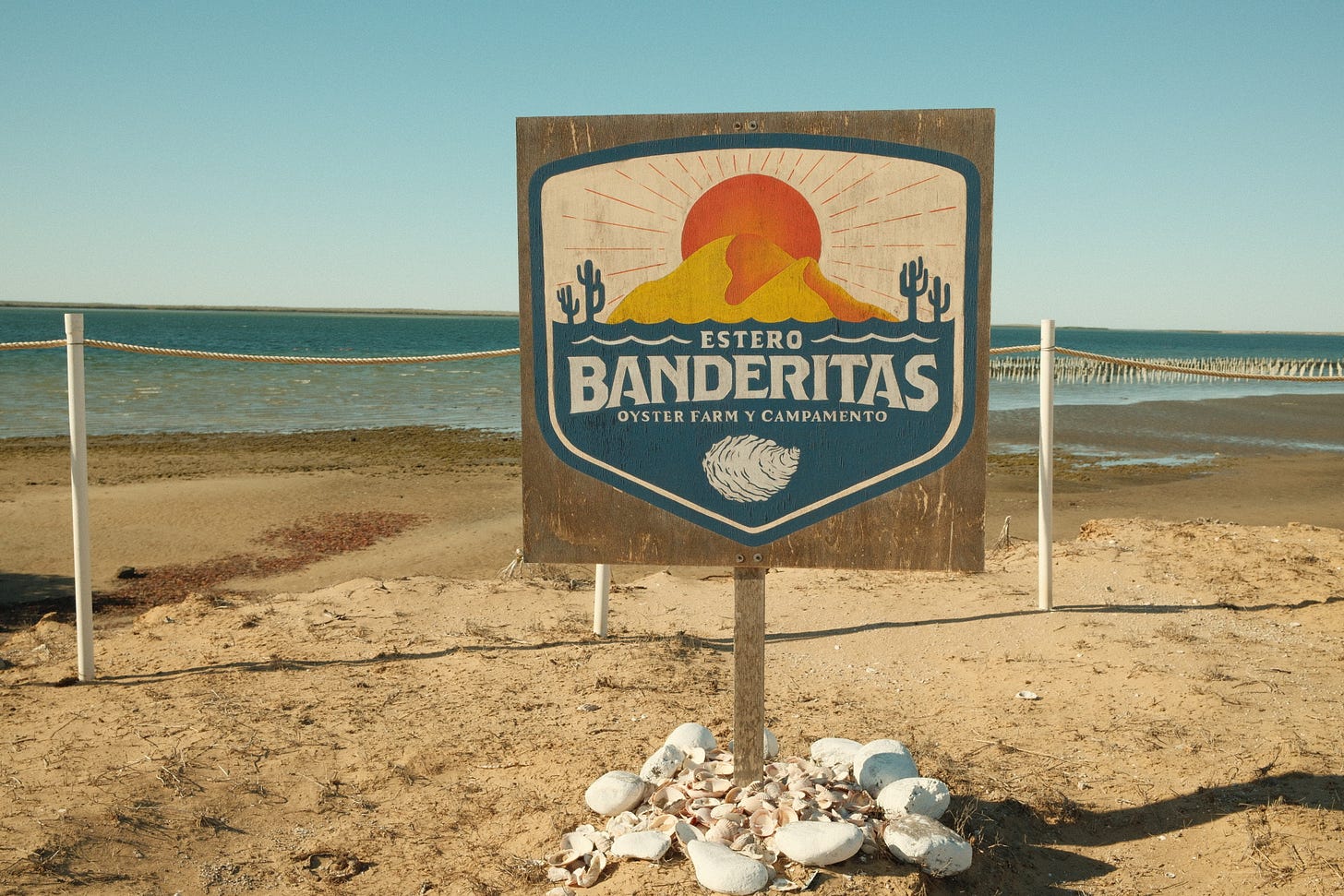
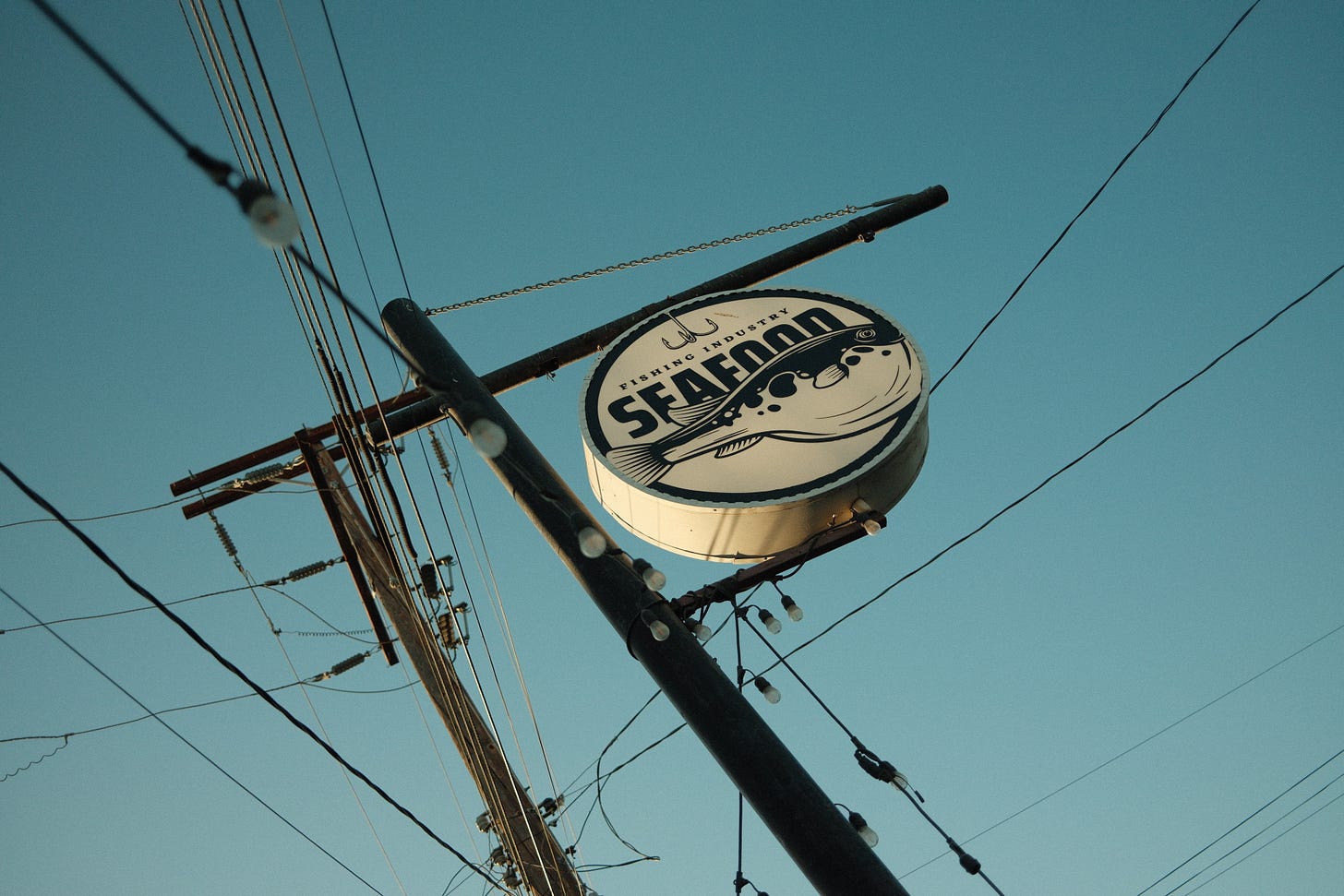
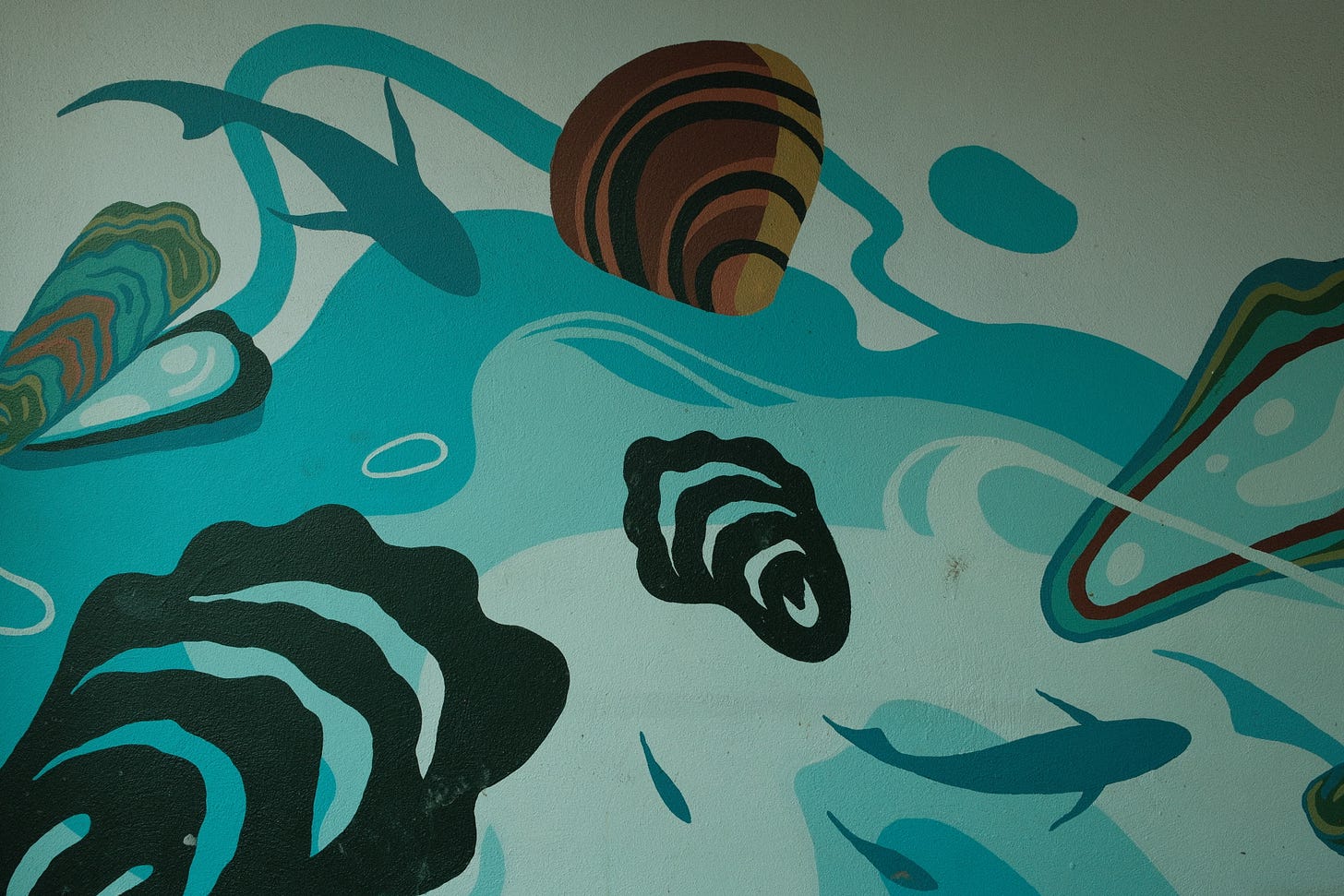
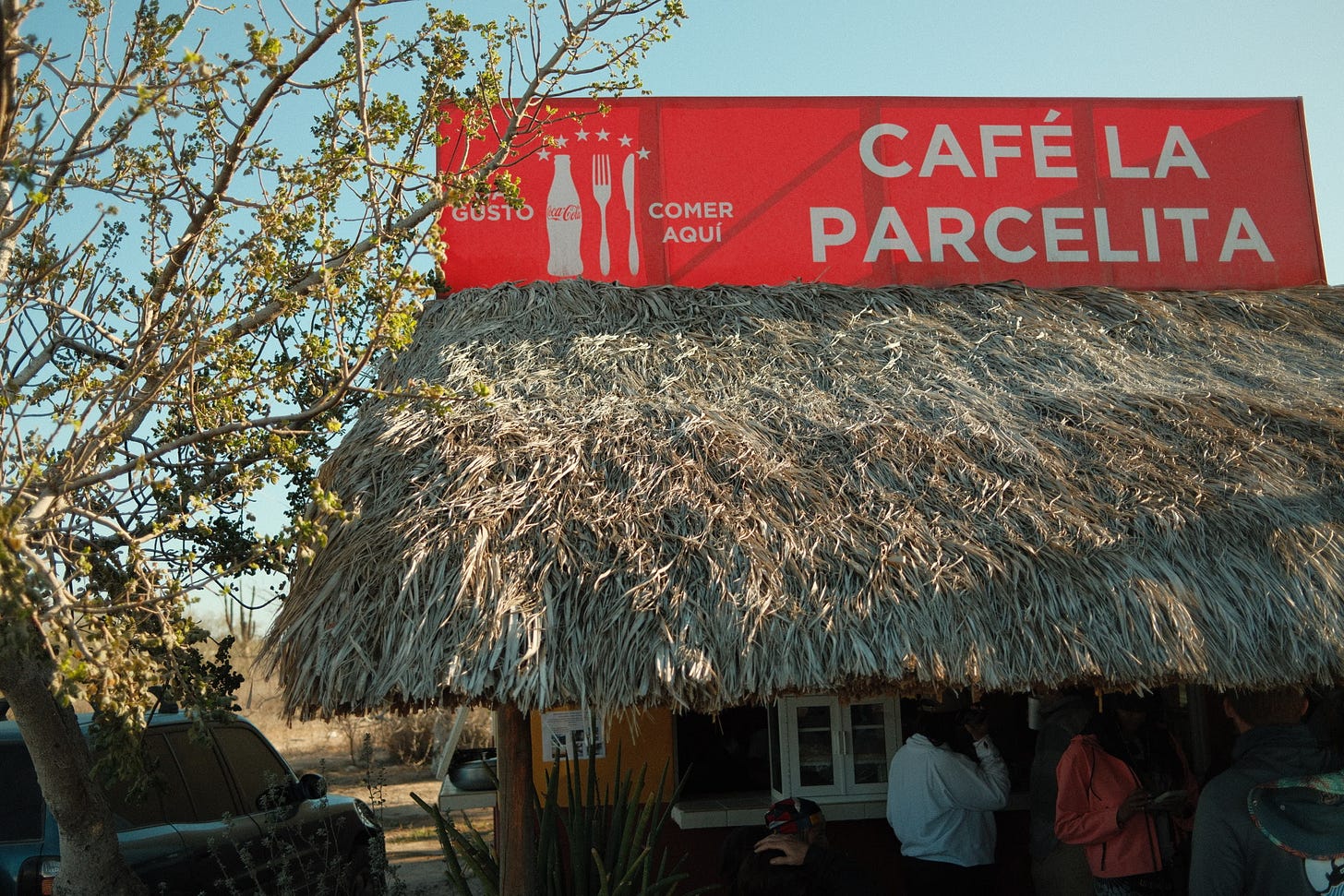
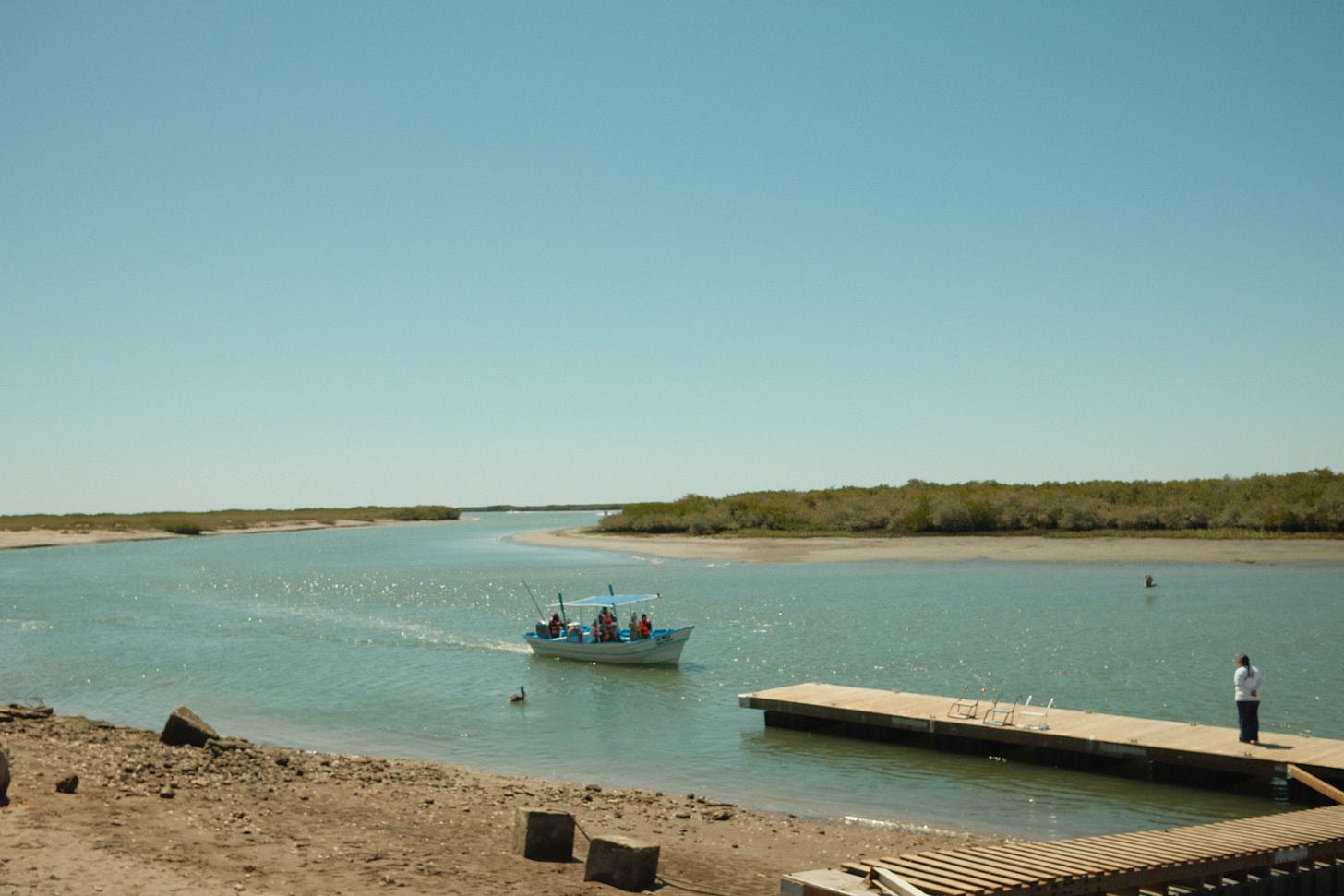
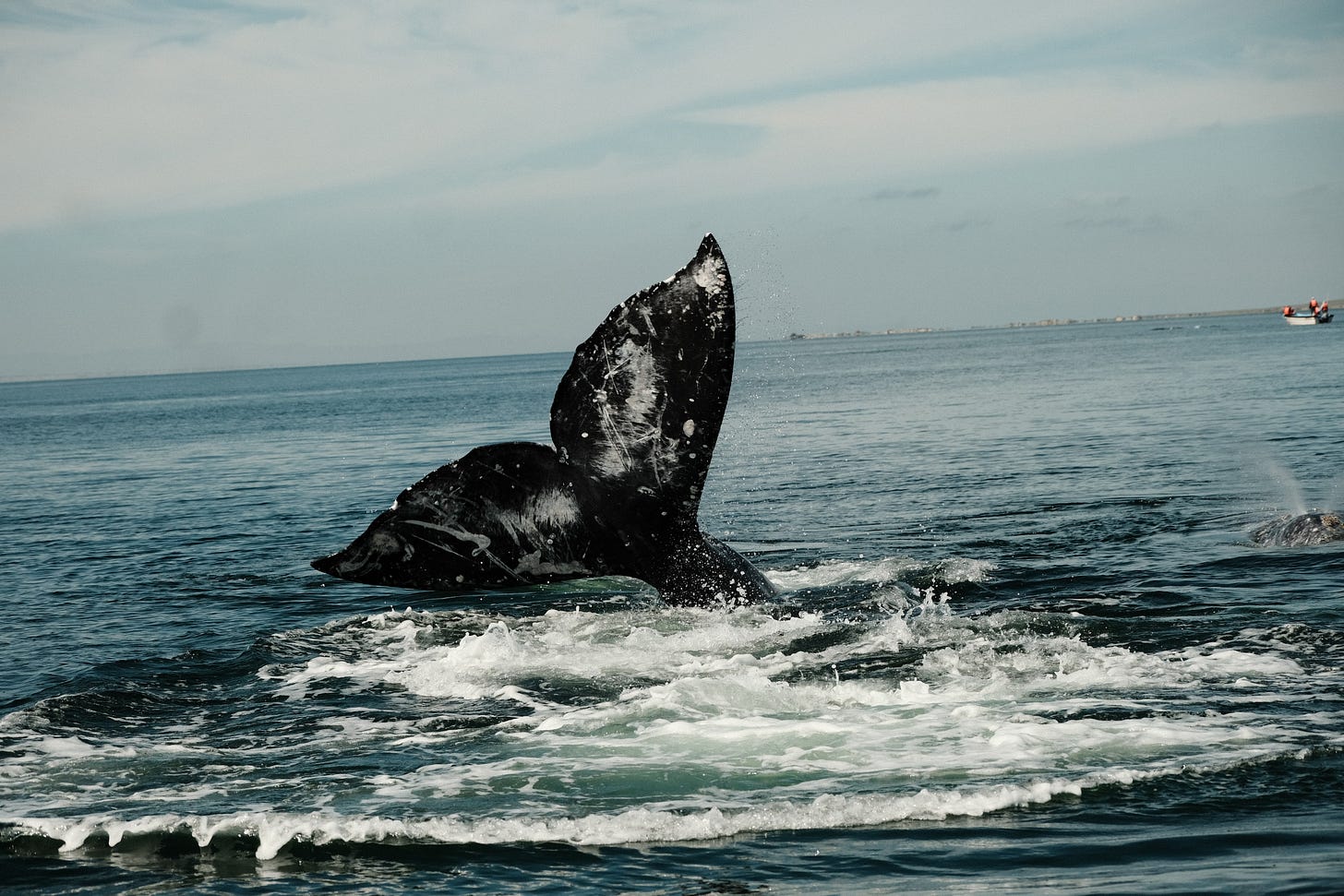
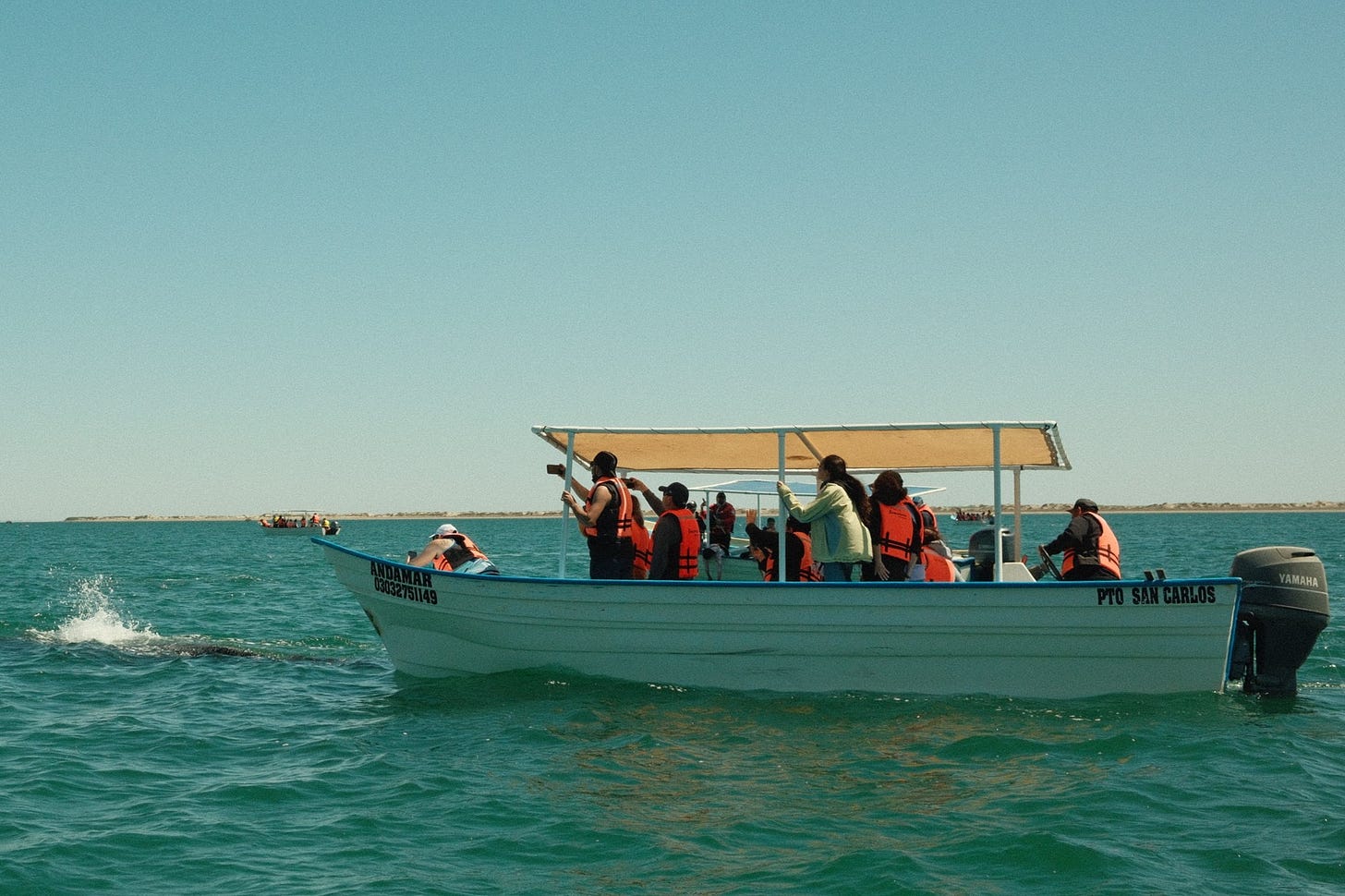
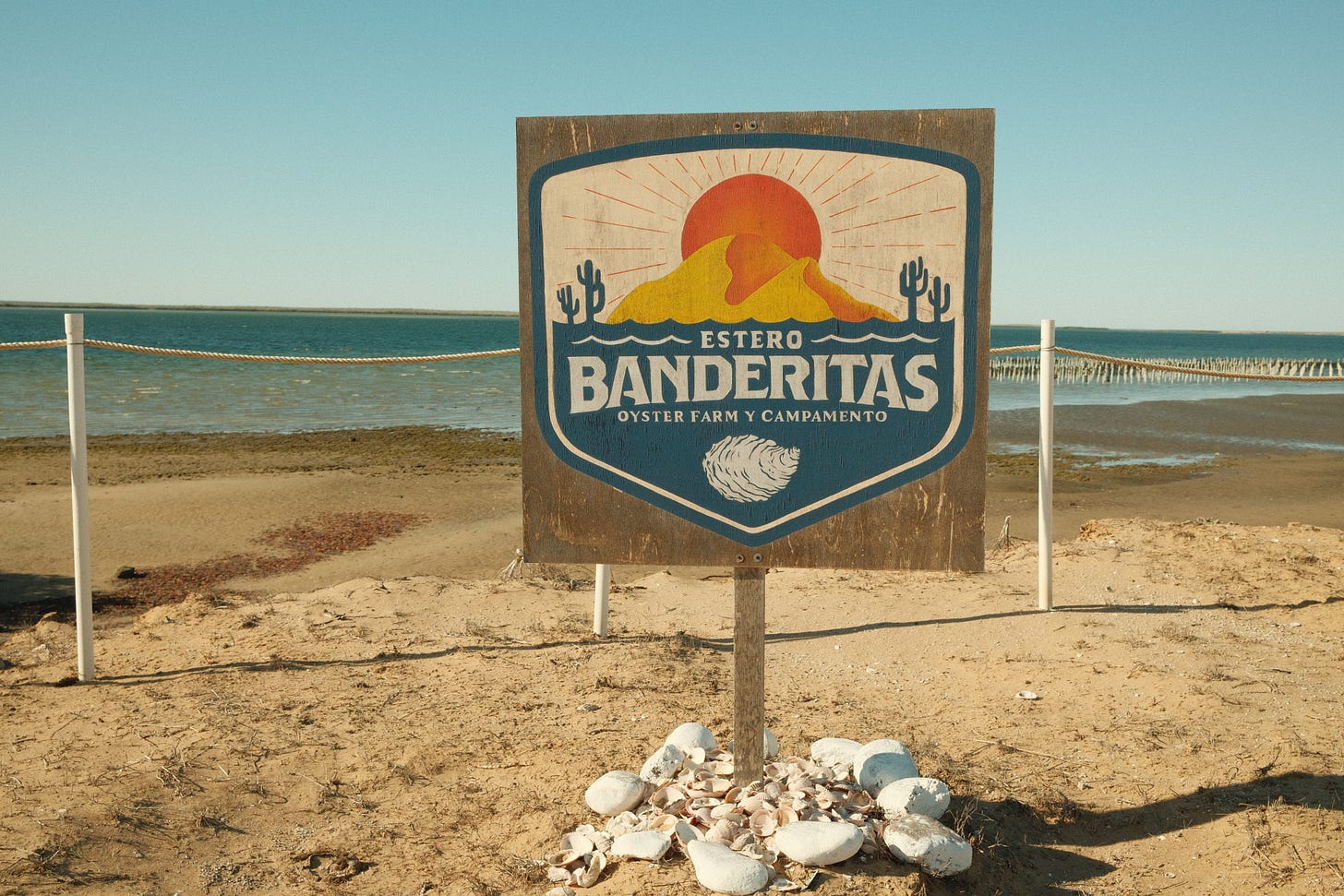
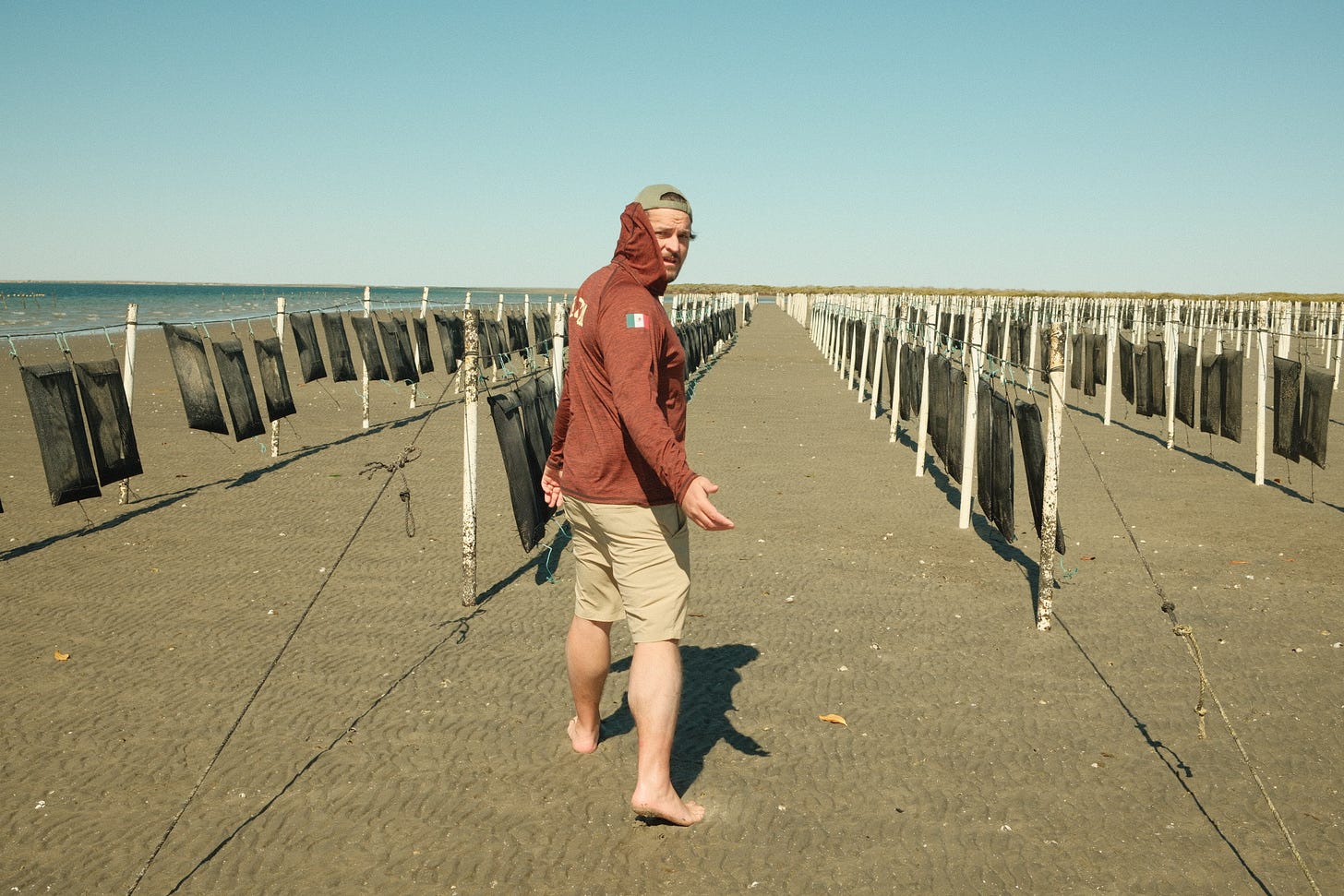
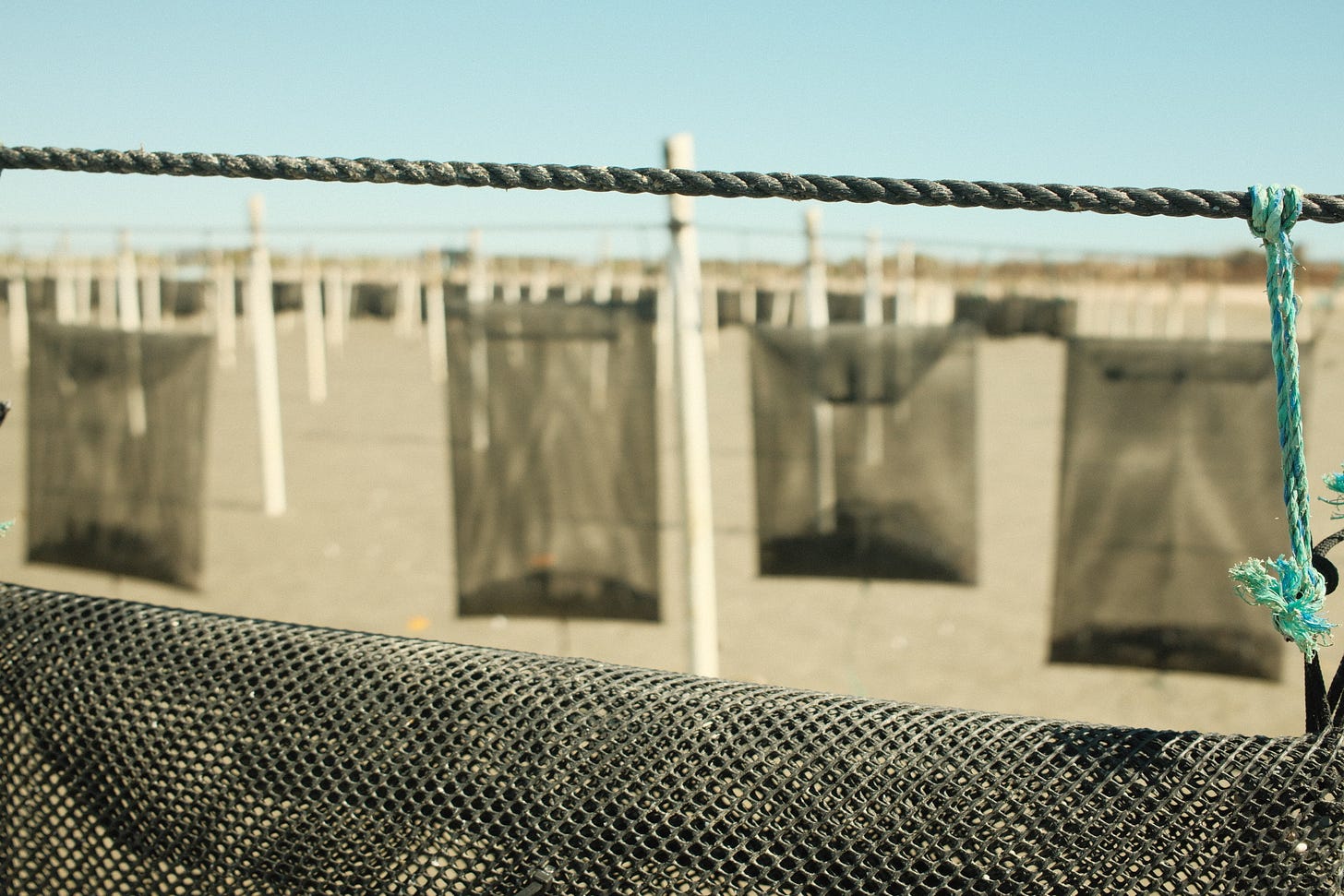
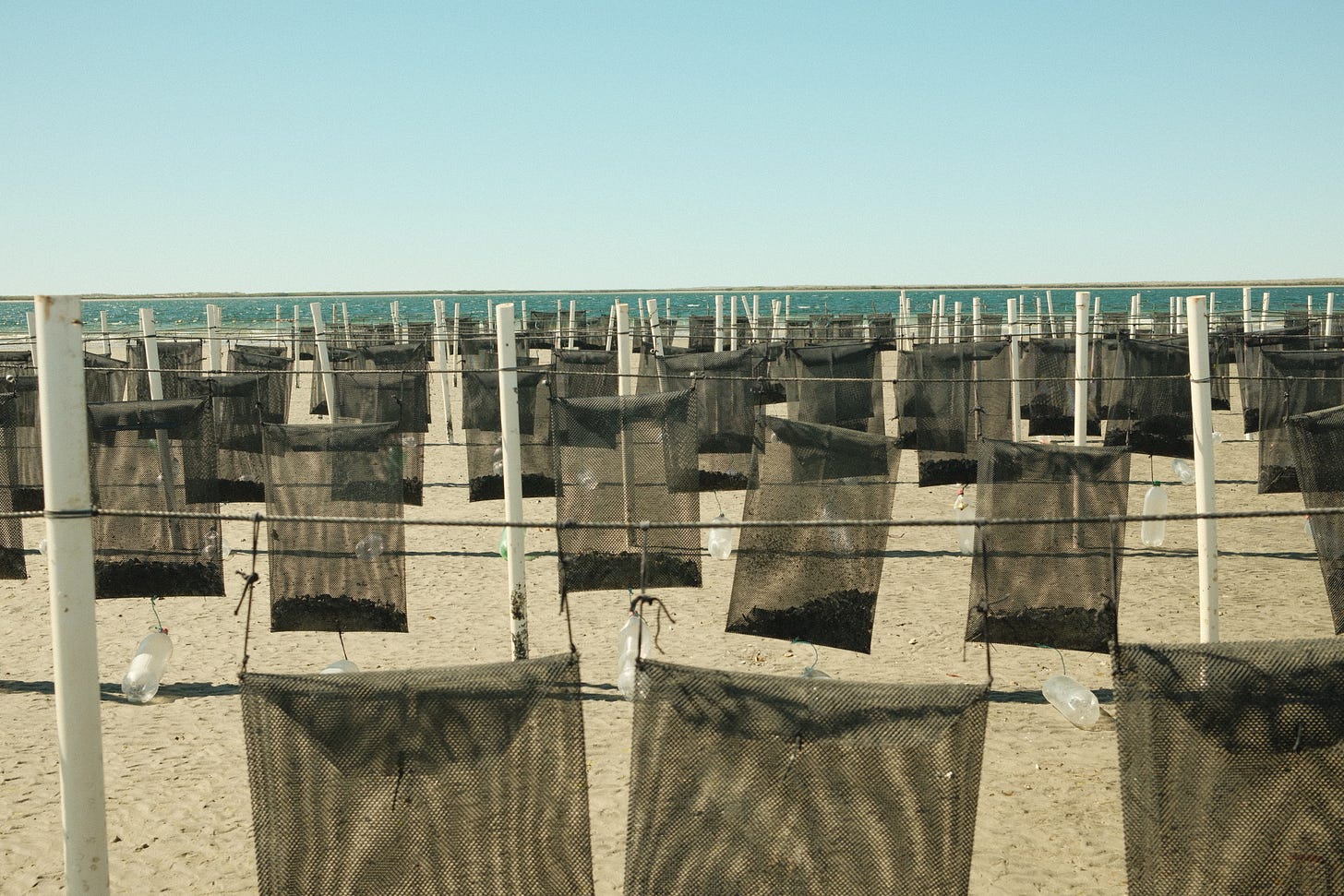
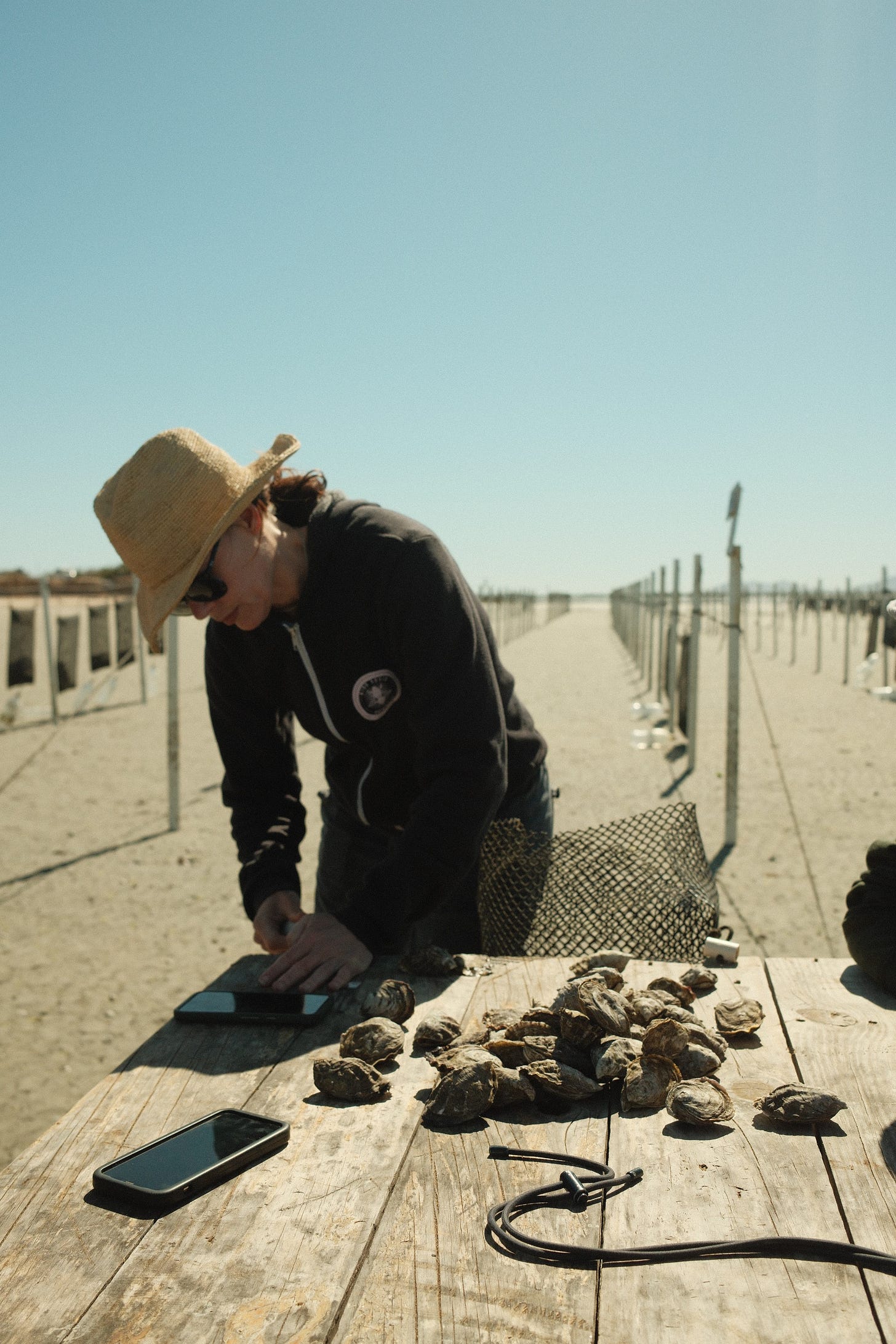
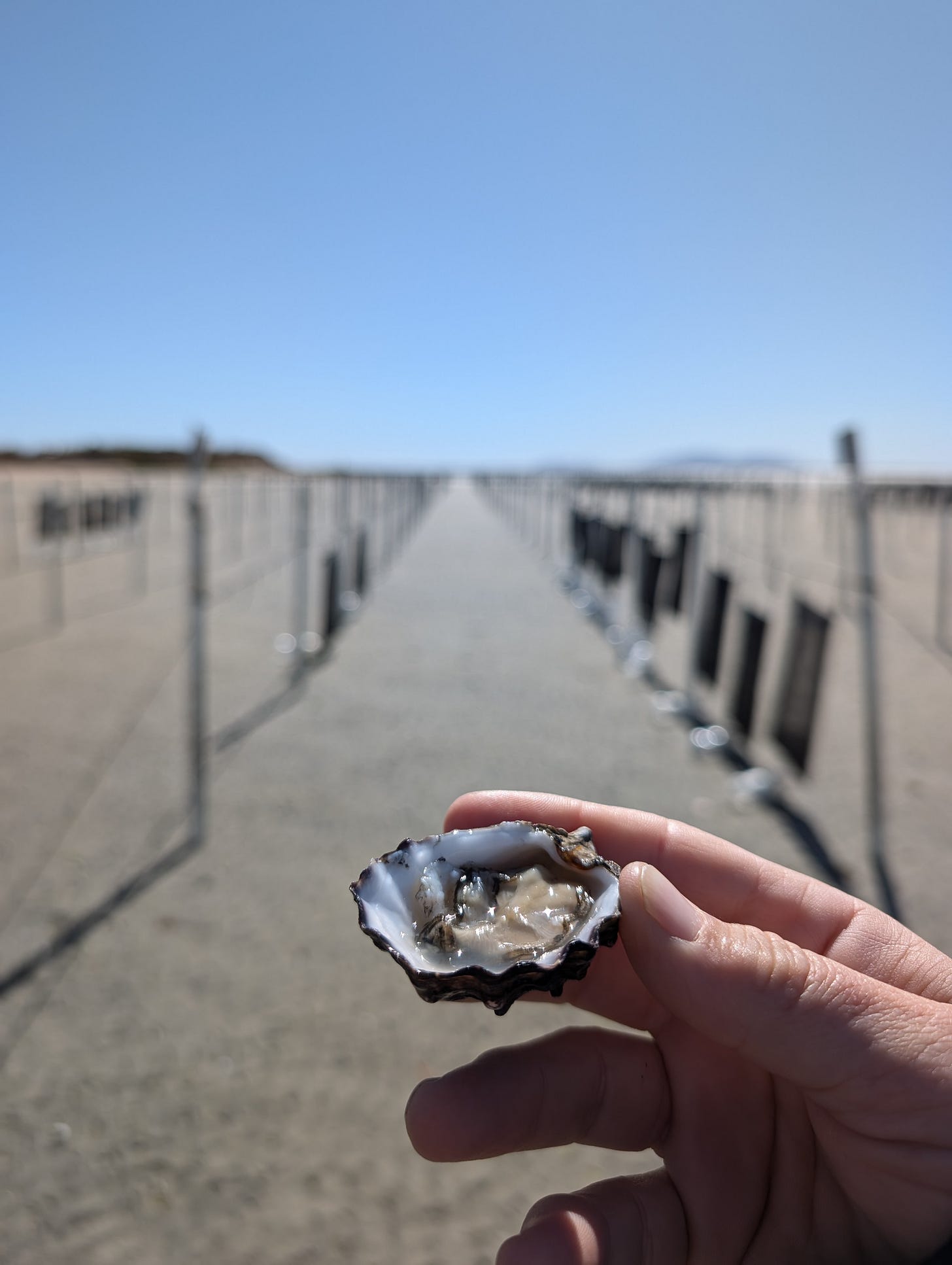
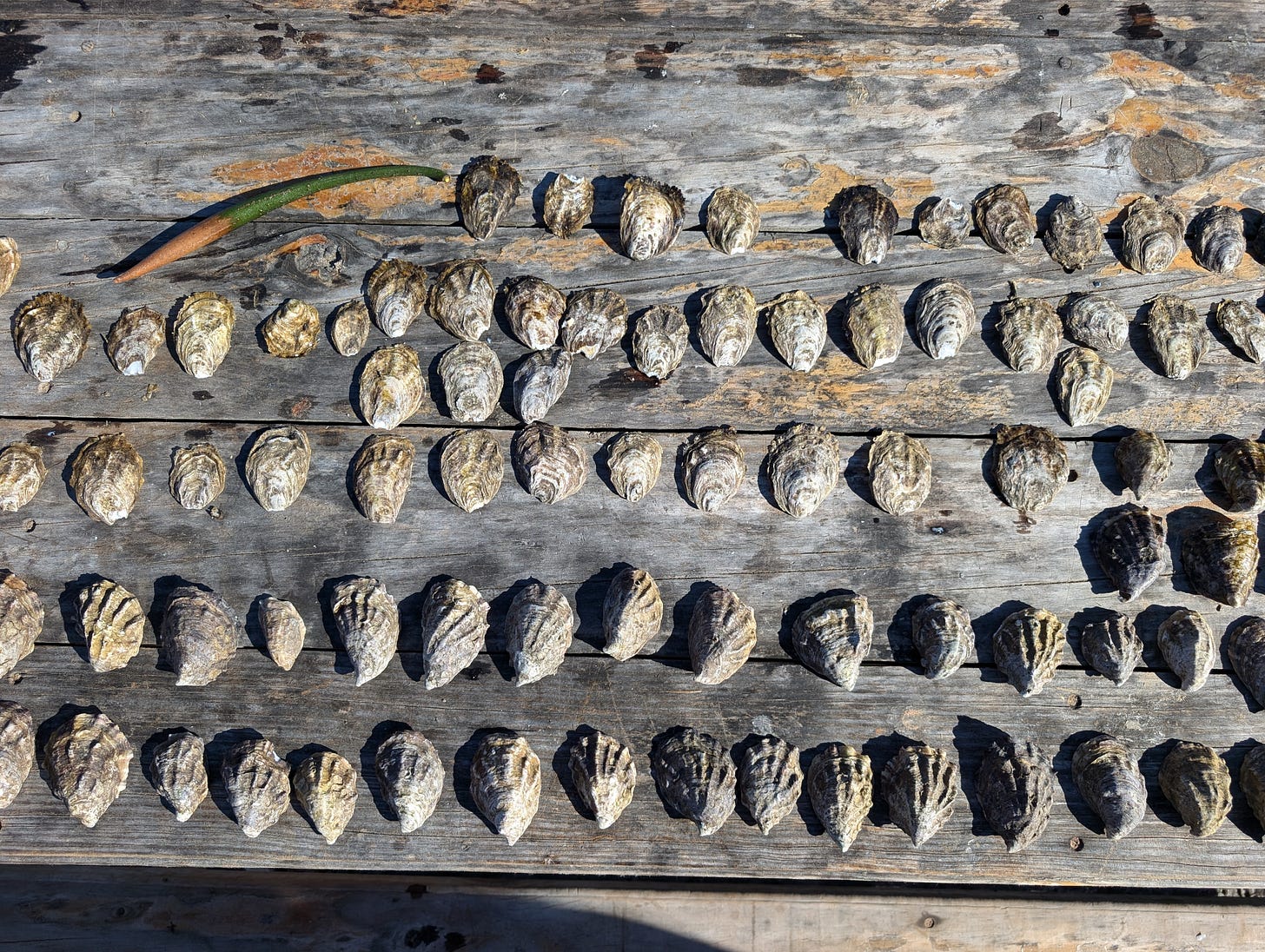
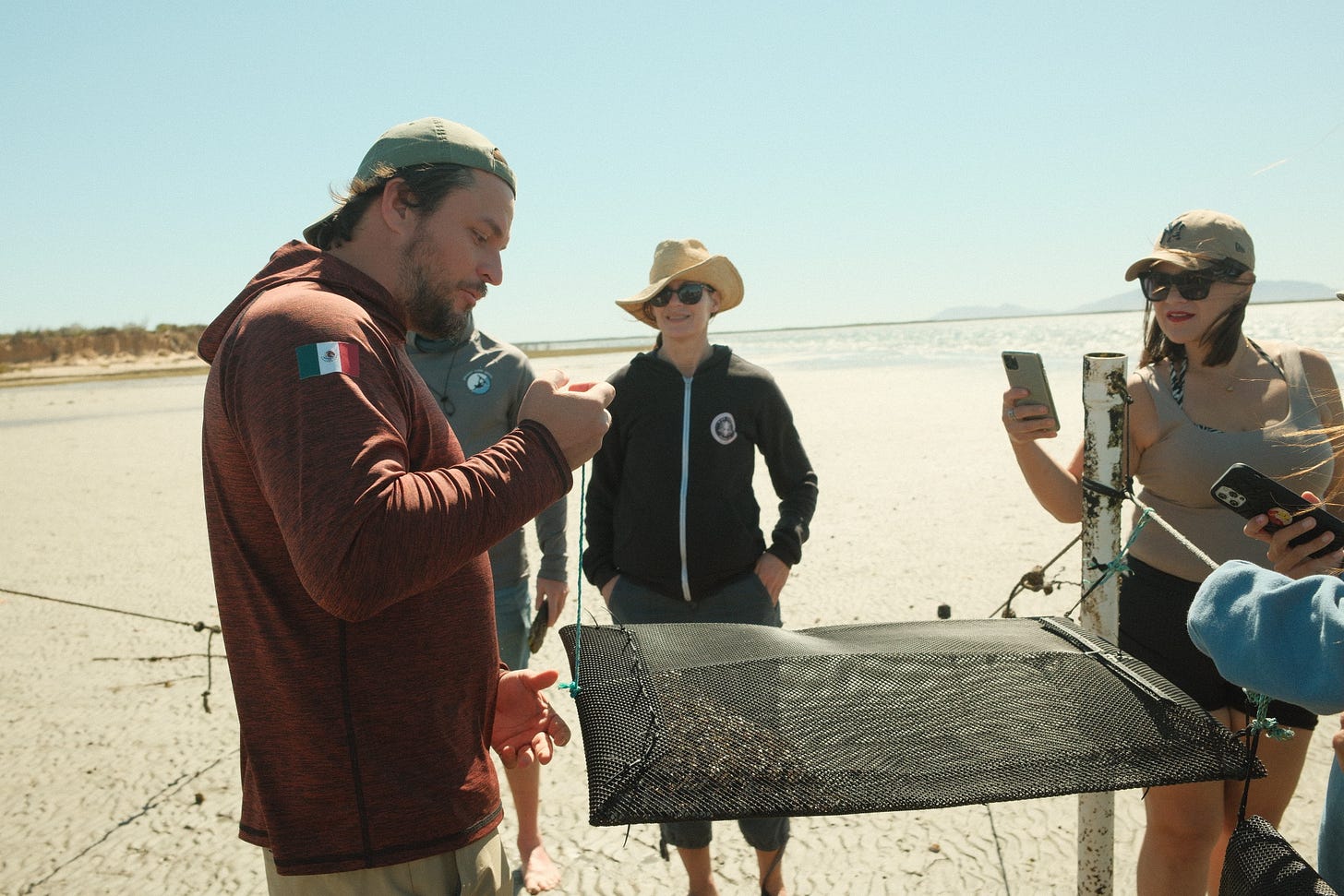
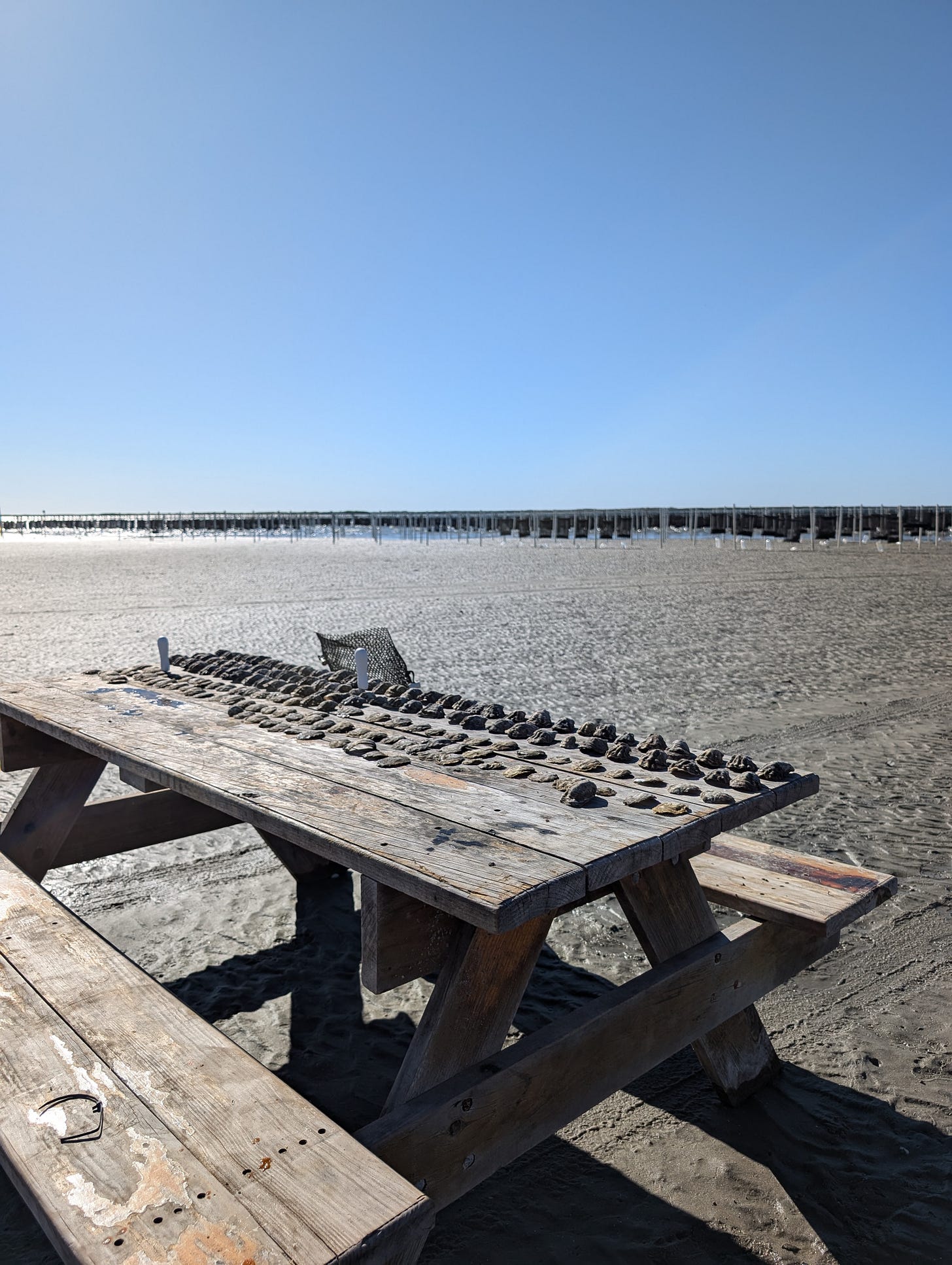
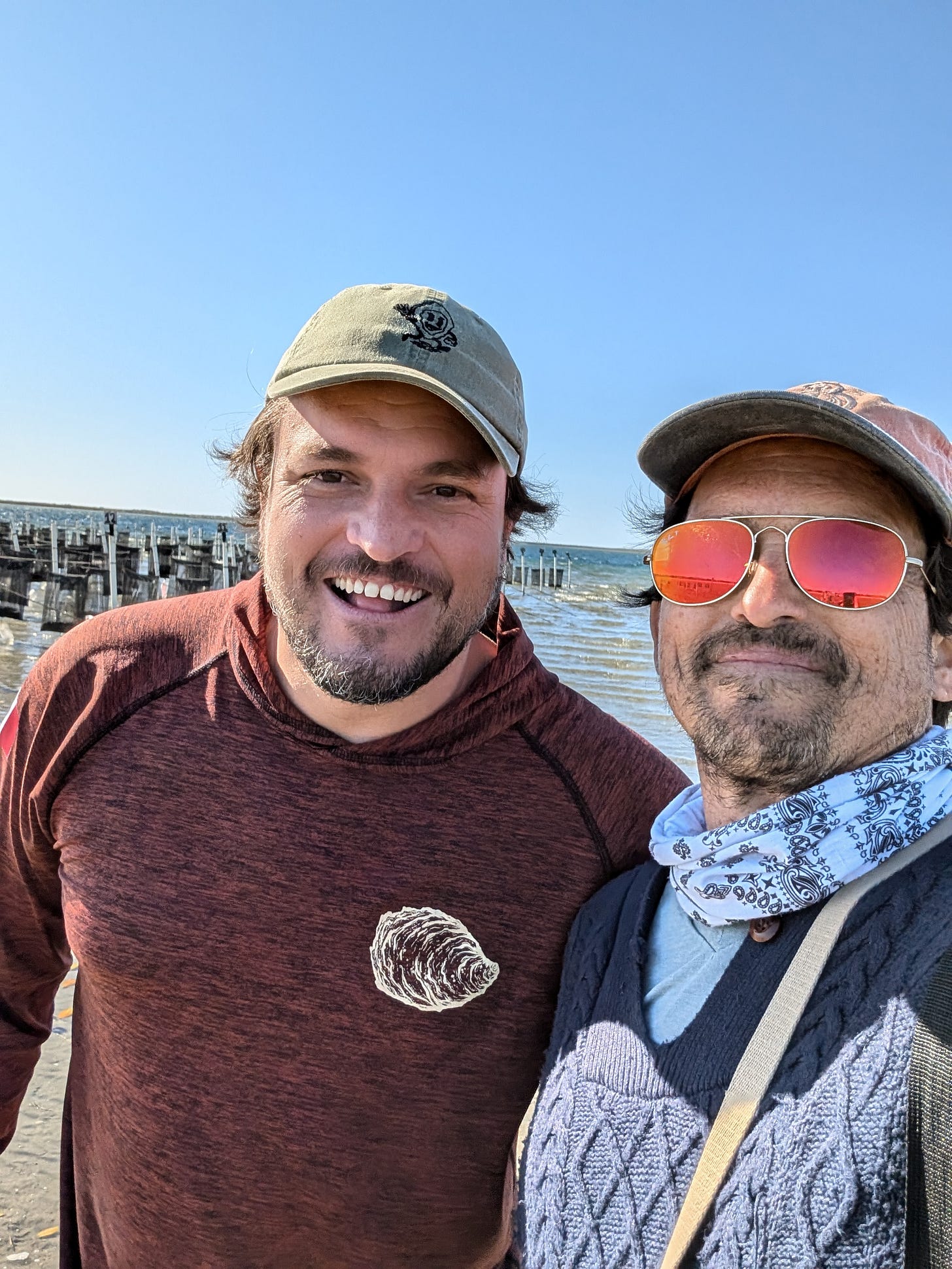
A beautiful photographic journey. I love the adventure and story. ❤️